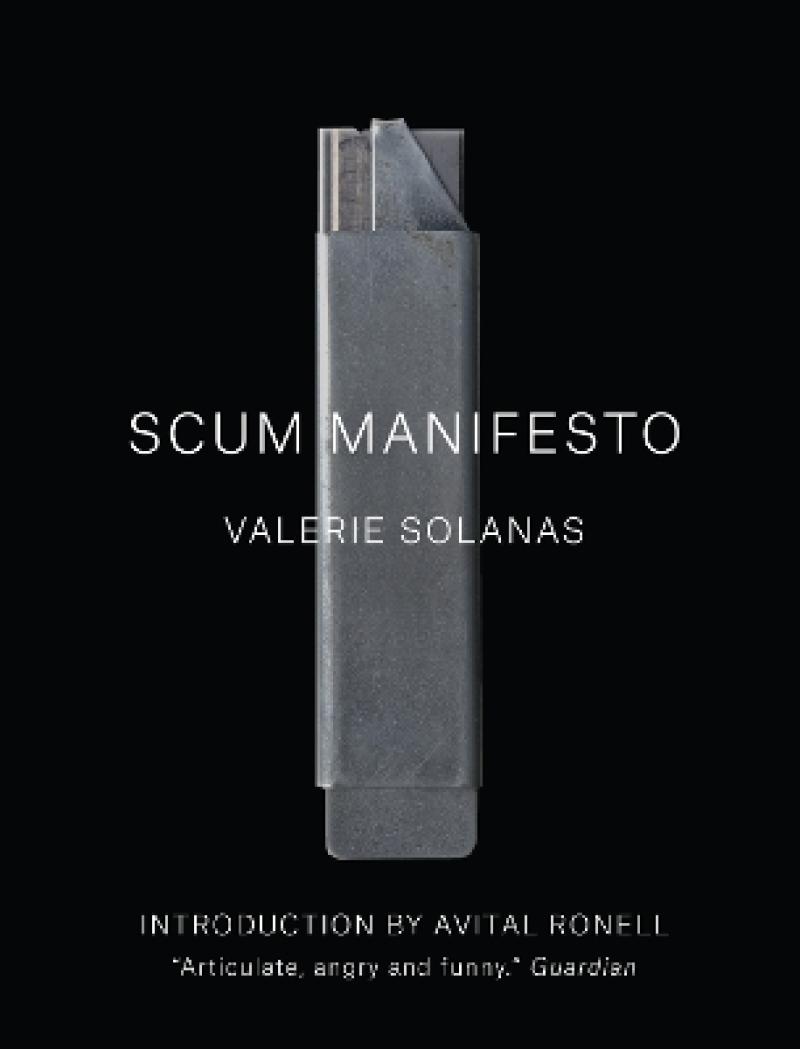The <i>SCUM Manifesto</i> is a document of profound vulnerability, written in a voice of profound empowerment. It's a brutal call to arms, written by a woman in a world of hurt. This tension between powerlessness and power makes it an enduring piece of writing. Never have the personal and the political been so mercilessly zipped together, like little steel teeth.
- Claire Dederer, Nation
Solanas is as relevant today as she was in the 1960s, because nothing much has changed for women.
- Julie Bindel, Spectator
You either happen to think this is a work of unadulterated genius, or you dismiss it as the ravings of a loony psycho-bitch, not understanding that this is exactly what makes it so compelling and so charged with insight.
- Suzanne Moore, New Statesman
Valerie Solanas wrote a very angry and very precise portrait of what she considered the male to be: something between a human and an ape; an unresponsive blob only concerned with physical sensation and without the capacity for empathy or self-knowledge or intimacy, and at the same time full of hatred and jealously and shame and guilt. Her description is beautiful and on some level, I think, entirely accurate.
- Nick Cave,
Its nihilism is a form of utopia for Solanas, a pre-punk aesthete who fearlessly tossed out ideas that people are just now beginning to raise . As a mixture of social philosophy and fine shtick, her work has the rare virtue of seeming at the same time totally insane and totally right.
Los Angeles Times
As Solanas reminds us, revolutionary ideas don't emerge quietly from the elite stratum of a society; they often bloom from its scum.
Dissent
Articulate, angry and funny.
Guardian
Gleefully incoherent, crackling with energy.
Bookslut
Outrageous and violent, SCUM Manifesto was widely lambasted when it first appeared in 1968. Valerie Solanas, the woman who shot Andy Warhol, self-published the book just before she became a notorious household name and was confined to a mental institution. But for all its vitriol, it is impossible to dismiss as the mere rantings of a lesbian lunatic. In fact, the work has proved prescient, not only as a radical feminist analysis light years ahead of its time-predicting artificial insemination, ATMs, a feminist uprising against underrepresentation in the arts-but also as a stunning testament to the rage of an abused and destitute woman.
In this edition, philosopher Avital Ronell's introduction reconsiders the evocative exuberance of this infamous text.
